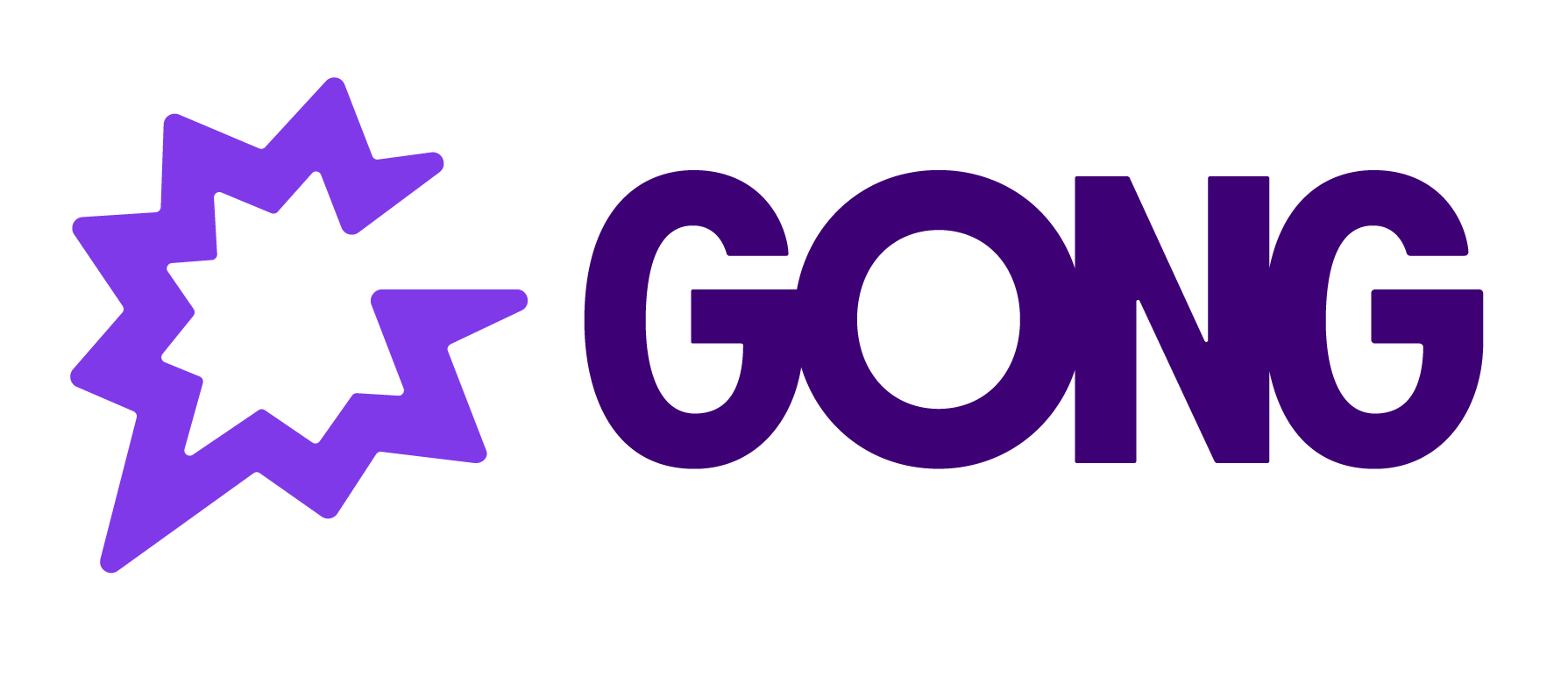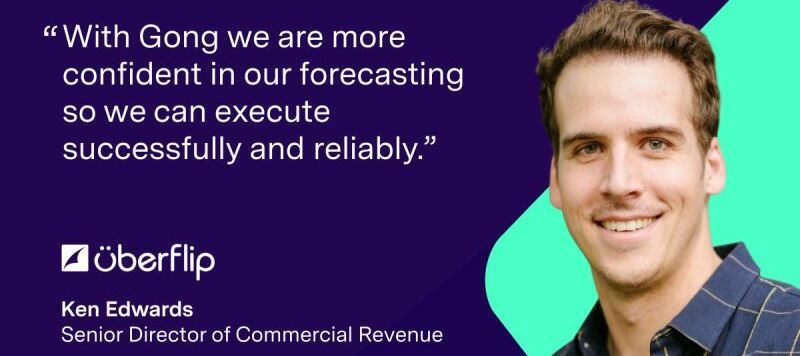Gong is the first platform I log into and the last thing I check at the end of the day. Why? The deals section. It’s where I go to understand my business as the Senior Director of Sales at Uberflip. Of course, much of my coaching, enablement, and customer feedback lives in Gong, but for my day-to-day job of serving a team that is focused on driving revenue from new logos, it’s indispensable.
Our team cadence is probably similar to yours, so you should be able to use the tips below about how Gong fits into our routine. Its place in our process is critical to being effective on the front lines and communicating accurate numbers up to my senior exec team and board. Here’s how we make sure that happens consistently:
Let's start with effective deal management.
Monday is pipeline review day. Our frontline managers typically start their work week running pipeline reviews with each rep on their team. We separate this from sessions dedicated to coaching or career development so the managers and reps can focus on the big picture:
-
Coverage for the quarter
-
Sales stage progression
-
Expected value of opportunities
-
Close dates
-
Salesforce hygiene
We run all of this out of Gong. We use a standard deal board for the AE team that includes the fields we want to update during pipeline reviews:
We rotate some trackers in an out depending on our area(s) of focus. Right now we are heavily focused on competitive differentiation, so we surface different competitors in our deal boards. That helps our managers remain proactive about discussing competitive strategies with their reps.
During these meetings, we typically share the deal board screen, and have it filtered to the individual rep and a specific timeframe.
From there, we have deal board roll ups, which give us a snapshot of the health of a specific rep’s pipeline. How much of it is sitting in upside? How much is in commit? Or total coverage?
Then we move onto the bulk of the discussion for a pipeline review: the deals themselves.
Our managers have all committed to going through the activity history of a rep’s deals before their pipeline review. This means we don’t spend time asking reps questions for which we should already have answers. Just like we expect our reps to do the required research before a discovery call, we expect our frontline managers to be up to speed on what’s happened in opportunities so they can maximize the time spent talking about what’s next — in other words, deal strategies.
This is typically a 10-minute exercise prior to a 1:1. We don’t have to listen to every call because the activity tab in Gong gives us enough insight into recent email engagement, call topics, and who’s been involved to have a productive conversation about a given deal.
At this point, we use the inline editing function in deal boards to update Salesforce as we go. Here are a few topics we cover: What are the next steps? Has the expected value of this deal changed? Are we moving stages or forecast categories? Making edits within Gong keeps our data clean and up to date.
That covers the start of our week.Throughout the rest of the week, managers and reps use the platform to drive deals to close.
One critical factor in this process is deal warnings. We keep our (customized) warnings notifications list relatively short so that the warnings are truly triggers for action. We’ve found that having too many warnings or ones that are too ambitious just creates noise. As a result, they’re ignored. Instead, we stick with the following warning triggers:
-
The deal has been single-threaded for a long time
-
There’s a red flag email
-
The buyer isn’t responding
If we see any of those warnings we can take action before it’s too late. For example, if we’re single-threaded, we look to Gong to help us take corrective action:
-
We look at the “Contacts” view to see if anyone else from the buyer’s side was on past calls. Often, we’ll loop them back in to help revive momentum.
-
We also consider whether an exec from our team might reach out to a peer on the buyer’s side. It’s easy to send the “account view” section of the deal board to anyone in our org to bring them up to speed quickly if we want them to write an email or make a call at the exec level. There’s no playing broken telephone when we loop execs into our deals.
By now, we’re at the end of the week.
On Fridays, our sales leaders get together to finalize a forecast that’s in the leadership team’s inbox on Monday morning. We’ve used Gong all week to help us manage deals effectively, so forecasting is a pretty quick process. We go into this meeting with a good sense of what’s happening in the deals that make up our forecast and a high level of confidence in that information.
So how do we forecast on Fridays in Gong?
Our predictions are tracked week over week in the “Forecasting” section of our deal board.
In this section, each frontline manager on our sales team has a roll up for each rep’s quarterly best case and commit. This lines up against our targets, and Gong calculates the coverage we have within our remaining pipeline and the possibility that we can reach our goals. We do this on two different time horizons, monthly and quarterly.
This means reps have one place where they submit their numbers week over week, and where there’s nuance and context around those numbers. They can see their deal inventory in Gong and submit a number that might be slightly different from the Salesforce amount — a number that accounts for what’s really happening in a deal cycle.
For example, in our best-case scenario, a rep may have three $50k deals in process. If one is an early stage deal and we have reason to believe the amount might drop, we might submit $130k in the forecast to account for that possibility. The rep would simply add some notes in Gong for their manager.
When we go into our sales leaders’ meeting on Friday, we have the numbers the reps entered individually. We use this meeting to review those numbers and roll up a holistic forecast for each of the teams.
This process is more collaborative than doing the exercise in isolation, and ensures that managers and reps are on the same page about their best-case outcomes and commits. If the numbers a rep submits surprise the manager for any reason, it’s easy to have a conversation right away or in the next pipeline review to stay aligned.
In our Friday meeting, we also look at week-over-week trends to understand what’s driving increases or decreases in our anticipated revenue.
At Uberflip, Gong provides our managers with one system they all use to effectively manage pipeline and forecast as accurately as possible. We chose to use Gong as our source of truth in forecasting because it’s where we get closest to the voice of our customer — where we can really understand what’s happening in our pipeline.
Since standardizing this move to Gong for our pipeline reviews and forecasting, we’ve made more accurate calls month over month, and are more confident in our ability to get ahead of deal risks so we can execute successfully and reliably. This is bearing out in our win rates and ACV. And isn’t that what we’re all chasing?


